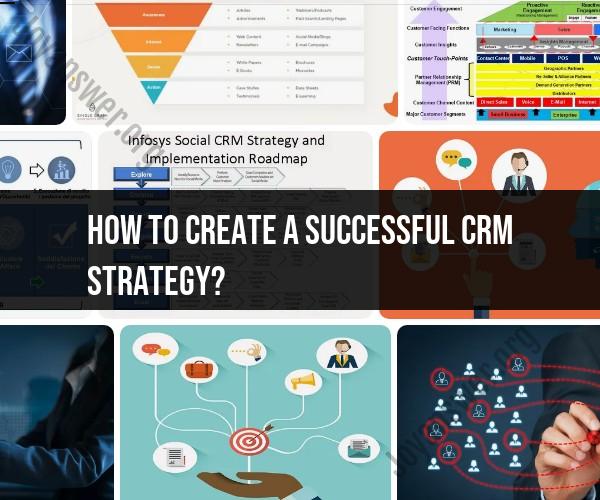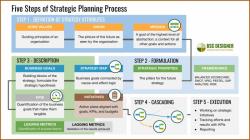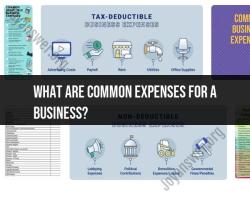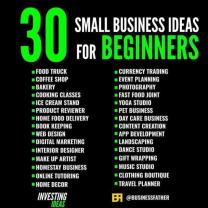How to create a successful CRM strategy?
Creating a successful Customer Relationship Management (CRM) strategy is crucial for businesses looking to build and maintain strong, long-lasting relationships with their customers. Here are key steps and tips to help you create a successful CRM strategy:
Set Clear Objectives:
- Begin by defining clear, measurable objectives for your CRM strategy. What do you want to achieve? Whether it's improving customer satisfaction, increasing sales, or enhancing customer retention, having specific goals will guide your strategy.
Understand Your Customers:
- Collect and analyze customer data to gain insights into their needs, preferences, and behaviors. This data can come from various sources, including surveys, social media, purchase history, and website analytics.
Segment Your Customer Base:
- Divide your customer base into segments based on shared characteristics or behaviors. This allows you to tailor your interactions and marketing efforts to specific groups, increasing relevancy and effectiveness.
Select the Right CRM Software:
- Choose CRM software that aligns with your goals and is capable of handling your specific needs. Consider factors like scalability, integration with other systems, and user-friendliness.
Train Your Team:
- Ensure that your team is well-trained in using the CRM system. They should understand how to input and access customer information and use the software effectively.
Automate Routine Tasks:
- CRM systems can automate routine tasks such as data entry, follow-up emails, and lead nurturing, saving time and improving efficiency.
Personalize Interactions:
- Use the customer data in your CRM system to personalize interactions with customers. This can include personalized emails, product recommendations, and tailored marketing messages.
Provide Exceptional Customer Service:
- Customer service is a critical component of CRM. Respond to inquiries promptly, resolve issues efficiently, and ensure a positive customer experience.
Implement Multichannel Communication:
- Engage with customers through multiple channels, such as email, social media, phone, and chat. Ensure consistency in messaging and branding across these channels.
Feedback and Improvement:
- Continuously collect feedback from customers and use it to make improvements. Customers appreciate when their feedback is acted upon.
Measure and Analyze Performance:
- Regularly assess the performance of your CRM strategy by tracking key performance indicators (KPIs) like customer satisfaction, conversion rates, and customer lifetime value.
Iterate and Refine:
- Based on your analysis, make iterative improvements to your CRM strategy. What works today may not work tomorrow, so be flexible and adaptive.
Data Security and Compliance:
- Ensure that customer data is handled securely and in compliance with data protection regulations, such as GDPR or CCPA, to build trust with customers.
Employee Buy-In:
- Secure buy-in from all employees who will be using the CRM system. Encourage their active participation and emphasize the benefits the CRM system can bring to their roles.
Customer-Centric Culture:
- Foster a customer-centric culture within your organization. Ensure that everyone, from leadership to frontline employees, understands the importance of the customer and their role in building and maintaining relationships.
Regularly Review and Update Your CRM Strategy:
- As your business evolves and customer expectations change, your CRM strategy should evolve with them. Regularly review and update your strategy to stay aligned with your goals.
Remember that a successful CRM strategy is an ongoing effort. Building strong relationships with customers takes time and dedication. Continuously work on improving your strategy and adapting to the changing needs and preferences of your customers.
Crafting a Winning CRM Strategy: Essential Steps to Ensure Success
A CRM strategy is a roadmap for how your business will use customer relationship management (CRM) software to improve customer interactions and relationships. A well-crafted CRM strategy can help you achieve a number of business goals, including:
- Increased sales
- Improved customer retention
- Higher customer satisfaction
- Reduced costs
To craft a winning CRM strategy, you need to start by understanding your business goals and objectives. Once you know what you want to achieve with your CRM strategy, you can develop a plan for how you will use CRM software to achieve your goals.
Essential Steps to Ensure Success
Here are some essential steps for crafting a winning CRM strategy:
- Define your goals and objectives. What do you want to achieve with your CRM strategy? Do you want to increase sales, improve customer retention, or reduce costs? Once you know what you want to achieve, you can start to develop a plan for how you will use CRM software to achieve your goals.
- Understand your customers. What are your customers' needs and wants? What are their pain points? The better you understand your customers, the better equipped you will be to use CRM software to meet their needs and provide them with a positive experience.
- Choose the right CRM software. There are many different CRM software solutions available, so it is important to choose one that is right for your business needs and budget. Consider factors such as the size of your business, your industry, and your budget when choosing a CRM software solution.
- Implement CRM software correctly. Once you have chosen a CRM software solution, you need to implement it correctly. This includes setting up the software correctly, configuring it to meet your specific business needs, and training your employees on how to use the software.
- Monitor and measure your results. It is important to monitor and measure the results of your CRM strategy to ensure that it is working as intended. This will help you to identify areas where you can improve your strategy.
CRM Strategy Development: Building the Foundation for Success
The first step in developing a CRM strategy is to define your business goals and objectives. What do you want to achieve with your CRM strategy? Do you want to increase sales, improve customer retention, or reduce costs? Once you know what you want to achieve, you can start to develop a plan for how you will use CRM software to achieve your goals.
Once you have defined your business goals and objectives, you need to understand your customers. What are your customers' needs and wants? What are their pain points? The better you understand your customers, the better equipped you will be to use CRM software to meet their needs and provide them with a positive experience.
Mapping CRM Success: Creating and Executing a Winning Strategy
Once you understand your business goals and objectives and your customers' needs and wants, you can start to create a CRM strategy. Your CRM strategy should map out how you will use CRM software to achieve your business goals and meet the needs of your customers.
Your CRM strategy should include the following elements:
- Target audience: Who are you targeting with your CRM strategy?
- CRM goals: What do you want to achieve with your CRM strategy?
- CRM strategies: How will you use CRM software to achieve your CRM goals?
- CRM metrics: How will you measure the success of your CRM strategy?
Once you have created your CRM strategy, you need to execute it effectively. This means implementing CRM software correctly, training your employees on how to use the software, and monitoring and measuring the results of your CRM strategy.
By following these essential steps, you can craft a winning CRM strategy that will help you achieve your business goals and improve your customer relationships.












